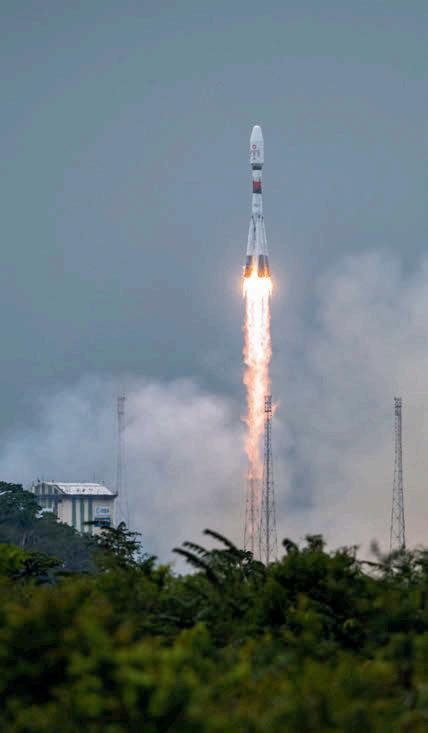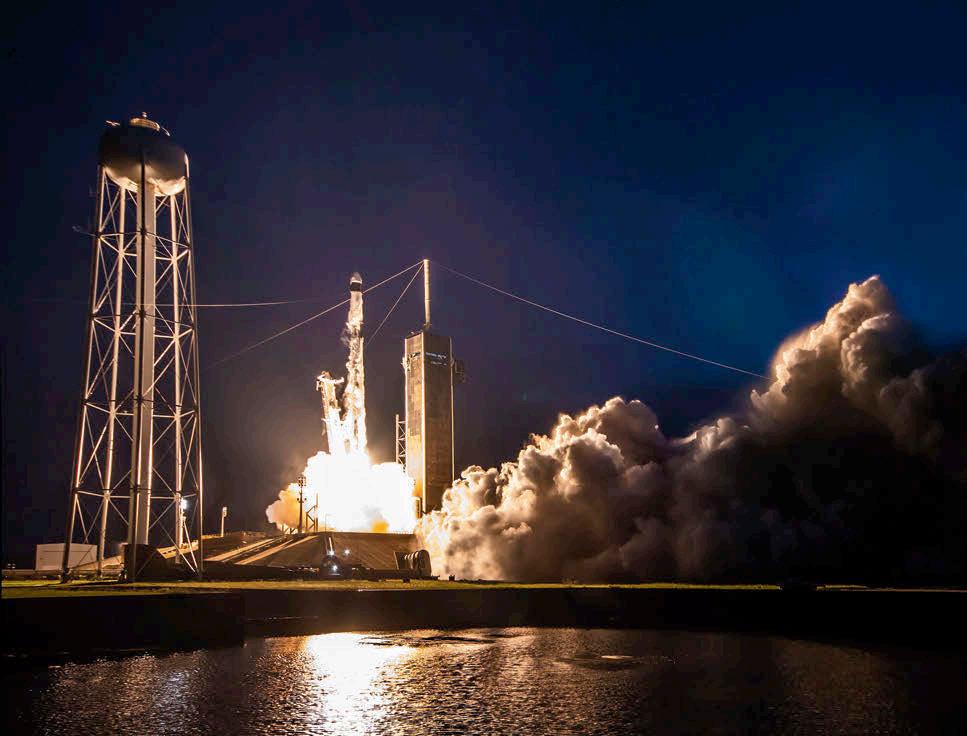
4 minute read
60%
from UK5G. Issue 11
THE UK SPACE SECTOR IS AN ECONOMIC SUCCESS STORY, GROWING BY THAN 60% SINCE 2010, ACCORDING TO BEIS.
Internet Everywhere
Advertisement
For now, though, the great space race is a contest between Starlink, OneWeb and Amazon-owned Kuiper Systems to provide ubiquitous reliable connectivity. Unlike AST, these require a ground station dish.
Bullitt Builds British Space Phone
Reading-based handset maker Bullitt is developing a phone with direct to satellite two-way messaging.
The device, which has been on the drawing board for the past two years, brings together one of the world’s leading chipset manufacturers as well as a satellite network infrastructure partner to create a messaging service that will switch seamlessly between wi-fi, cellular and satellite. This uses a combination of a customised chipset, a proprietary app and a sophisticated core network with infrastructure installed in satellite ground stations around the world. Bullitt’s rugged phones (sold under the Cat and Motorola brands) have always been designed for use in challenging environments and remote locations. But where the phones themselves may not let people down, sometimes a lack of cell coverage does. So, Bullitt decided to take the matter into their own hands.
In August Starlink and T-Mobile announced that it will create a new network, broadcast from Starlink’s satellites using T-Mobile’s midband spectrum nationwide. This true satelliteto-cellular service will provide nearly complete coverage almost anywhere a customer can see the sky using an unmodified mobile phone. With this technology, T-Mobile is planning to give customers text coverage practically everywhere in the continental US, Hawaii, parts of Alaska, Puerto Rico and territorial waters, even outside the signal of T-Mobile’s network starting with a beta in select areas by the end of next year after SpaceX’s planned satellite launches. It will start with text messaging, including SMS, MMS and participating messaging apps, afterwards, the companies plan to pursue the addition of voice and data coverage.
With its own launchers, SpaceX has an advantage – it doesn’t need to book rocket launches with anyone else. And the rollout continues to accelerate. One SpaceX launch alone in late July, its 33rd, added another 53 satellites in one shot. The reusable launch vehicle returns to Earth to land on a small drone ship, another cost saving. Today there are almost 3,000 Starlink satellites now in operation. OneWeb, a consortium in which the UK has a stake and which intends to merge with Eutelsat, has launched 428 satellites, with 1,280 more planned in medium Earth orbit –higher than LEO constellations, but capable of providing navigation and positioning. (OneWeb declined to be interviewed for this article.)
The largest order for launches placed so far has been by Amazon’s Kuiper, which has bought 83 launches to place more than 3,000 satellites into low Earth orbit. Starlink and OneWeb provide consumers and businesses with connectivity across the UK. With speeds of between 50Mbps and 150Mbps – although some achieve twice that – and latency between 20m and 40m, it compares well against fixed-line broadband in remote areas. For enterprises, both Starlink and OneWeb are focusing on transportation – inking trucking and maritime deals as fast as they can.
Mobile operators are also using the new space infrastructure to make their 5G network more resilient. Although they always prefer to use fibre for backhaul, satellite is a godsend when something goes wrong. “Satellite communication creates resilience in the networks, and that’s what we’re seeing,” Febvre explains. “Satellites are helping reduce the investment required to produce a resilient network. For rapid deployment in an emergency, or for quick fix in case of failure.”
That means “native 5G” that’s beamed from space to a “native” satellite 5G phone –one you might buy on the high street. Yes, that’s coming, but not yet.
“What becomes much more interesting is where you can remove the requirement for any special infrastructure on the ground – and use the infrastructure in space,” says Febvre. AST remains unique in being the only cellular mobile network in space, but building native satellite reception into phones may not be far behind, as the basic 5G air link protocols are being adapted for space.
The 3GPP standards process refers to these as NTNs, or non-terrestrial networks. Release 17 was frozen in March, meaning it is now in “production”. Examples include a deal signed by Qualcomm, Ericsson and Thales to test and validate the components needed for 5G NTNs, such as 5G smartphone, and a virtual radio access network (vRAN) modified to handle radio reception from LEO satellites.
Regulators can help – but have tough decisions to make, over power and spectrum.
“What’s changing is the recognition that when people go into the countryside they go in a vehicle,” says Febvre. “While the investment by Starlink and others initially focussed on delivery of broadband services to fixed locations, this is now being reoriented to reach moving platforms and in future will address the automotive sector requirements ”Disputes over spectrum have already broken out, with Starlink and satellite TV operator Dish at loggerheads in the United States. Dish wants to build a 5G network using 12GHz radio spectrum. Starlink says that would interfere with its own communications network, making it “unusable”.
“The regulatory framework needs addressing,” agrees Febvre, to iron out such disputes. “Satellites are constrained in the power they can generate per cm2.” It’s a power flux density issue, referring to the amount of energy contained in the radiation of the radio waves. “Historically this has governed the co-existence between line of sight microwave links and space. It’s a blanket regulation. We need to address these legacy constraints,” he adds.


With so many new methods of communicating rapidly emerging, it should be fairly high on the policy agenda. It’s a societal challenge to give data to the people, and rather than picking winners, Febvre says regulators merely need to allow the technologies to co-exist: so the market can decide
Andrew Orlowski Contributing Editor
A ndrew Orlowski has written about technology and markets for 25 years, including seven as US Editor of The Register. He is now a weekly columnist for Daily Telegraph Business.










